Top 10 AI automation services (in mid-2025)
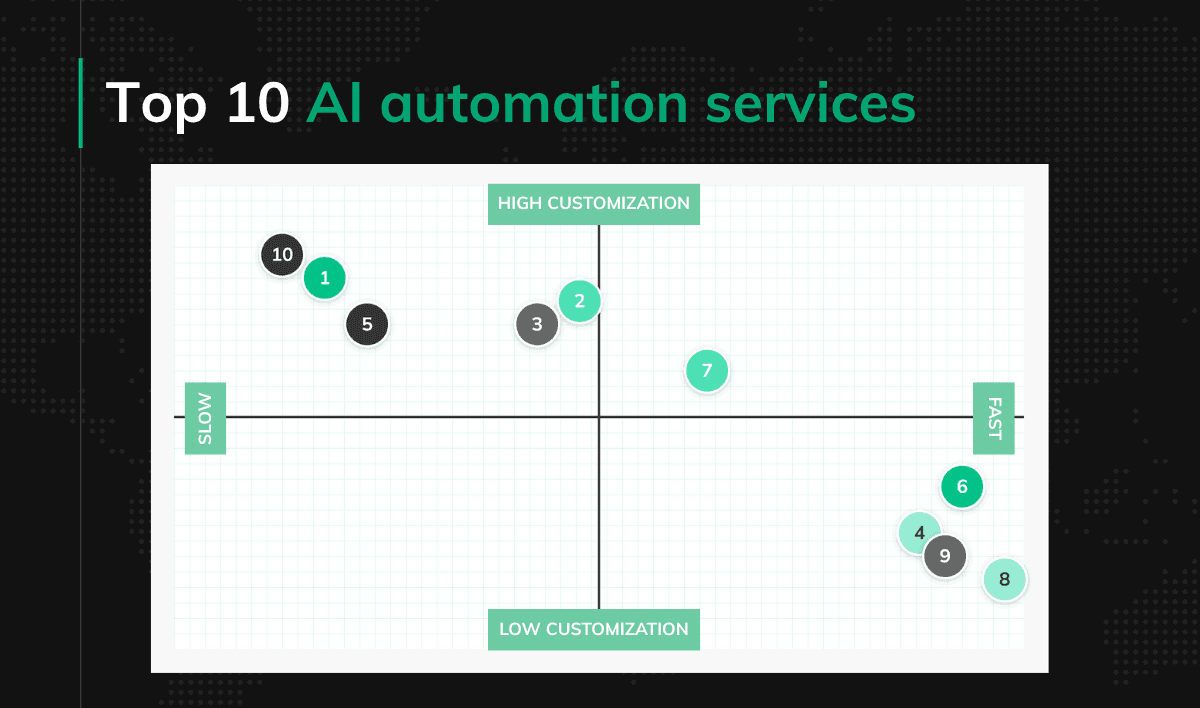
Maybe it’s you: You know you want something AI-ish in your business or product… but don’t know exactly what.
Check this list of 10 most sought-after AI automation services in 2025 (ordered from most to least popular). This will help you better recognize and clarify your needs.
AI SOFTWARE DEVELOPMENT
AI integration services: Comparisons
Here are two tables comparing all the 10 options. The first is a general comparison. For more details, check the second table (click the image to enlarge it).
*In the first table, Expertise refers to client’s expertise in AI.
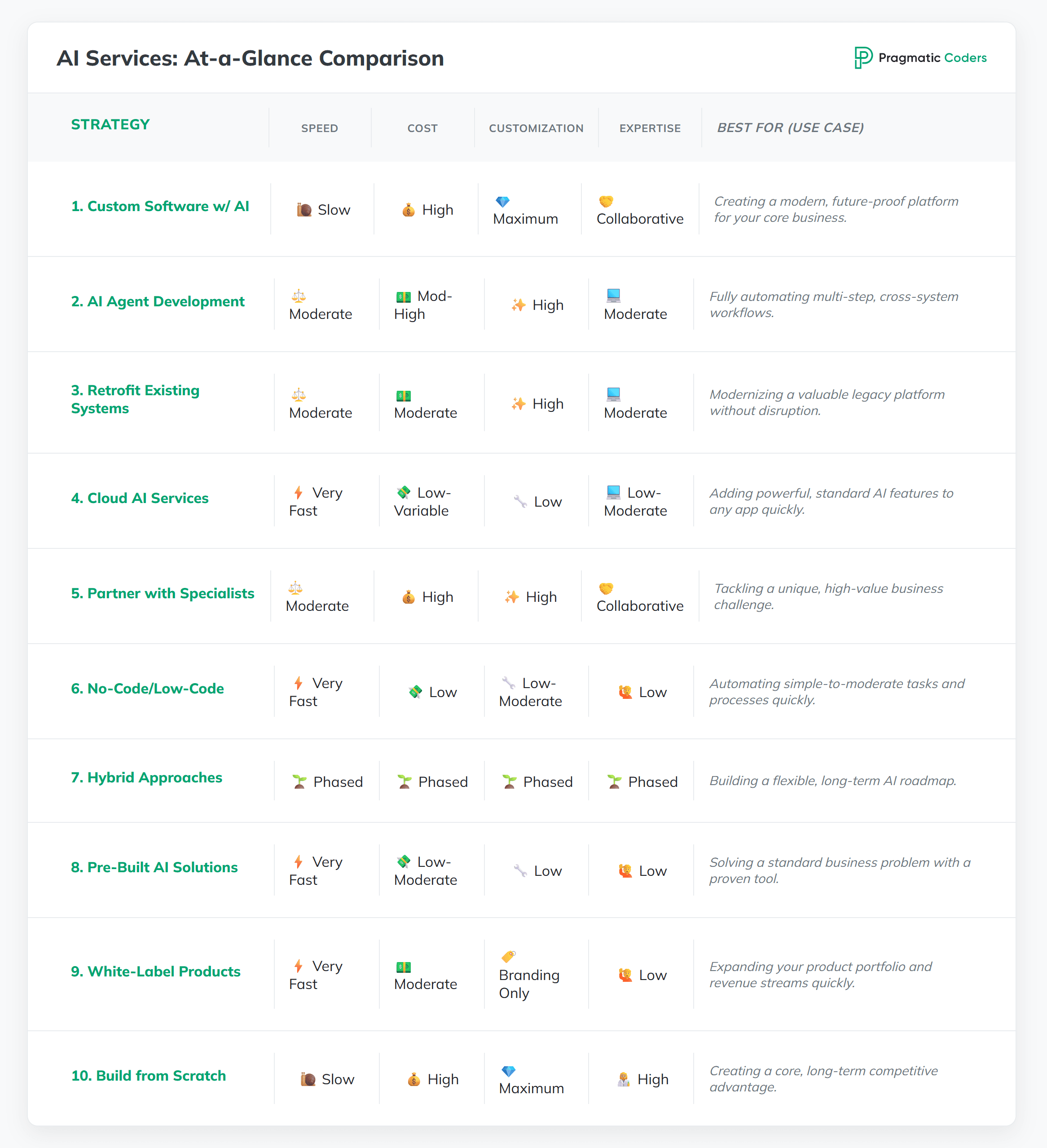
- For simplicity, we’re using a hypothetical example in which the client (“you”) is a a insurance claim company, and the software provider/AI partner is Pragmatic Coders.
1. Custom Software Development with Integrated AI (Greenfield)
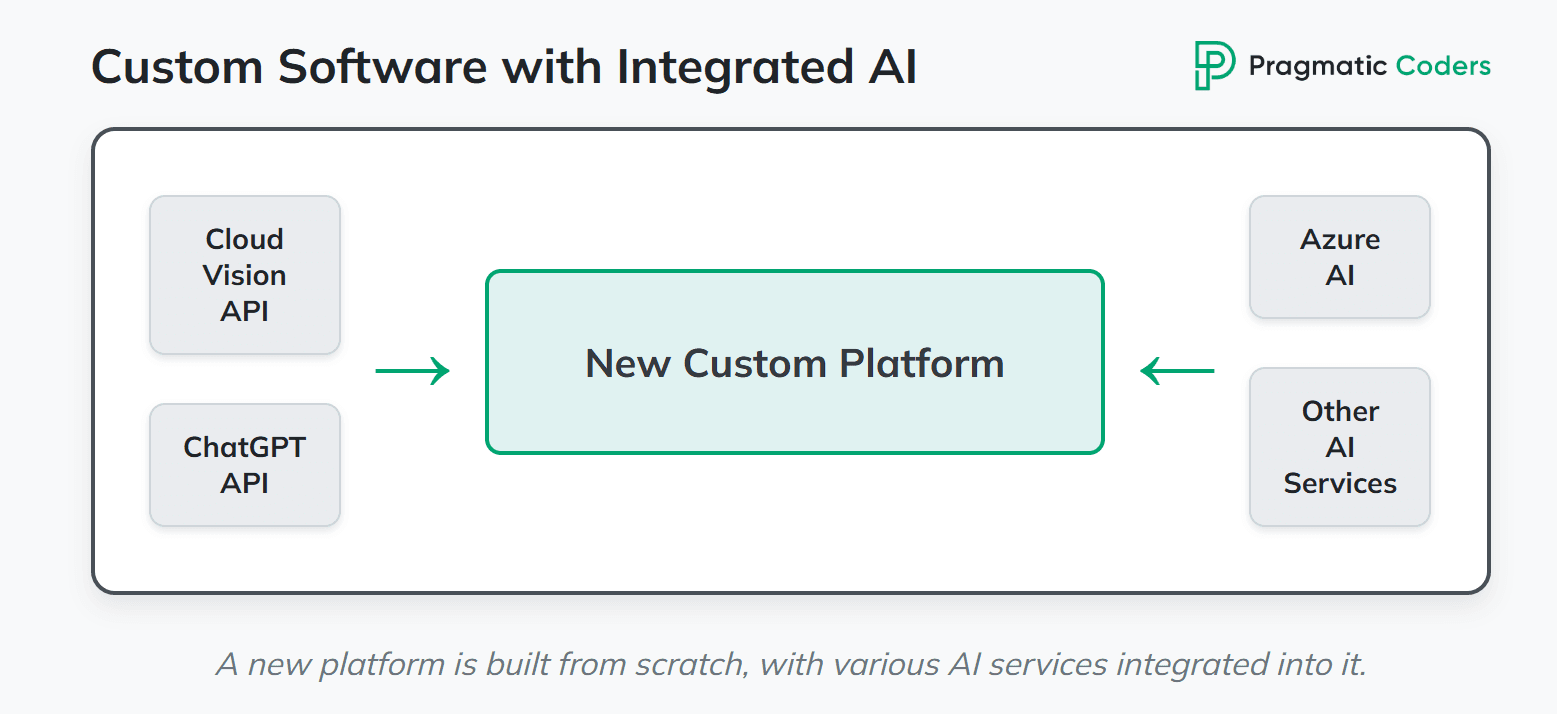
What It Means
If you’re looking to build software around your exact needs—with AI built in from day one—we’ve got you. We take care of the whole thing: design, development, logic, and user experience. Then we hook into reliable AI services like ChatGPT or Azure AI so your team gets real results, fast. No model training required.
Insurance Claims Example
Imagine you run an insurance company and need a brand new system for claims management. Pragmatic Coders builds you a web and mobile platform from the ground up, then integrates:
Automated image analysis: Damage photos are processed using Azure Computer Vision for instant assessment.
AI chatbot: ChatGPT powers customer conversations, automates answers and guides claimants through the process.
Document and sentiment analysis: Other AI APIs sort, interpret, and flag documents, or even pick up on negative customer sentiment for proactive outreach.
It fits your process, keeps your data safe, and evolves with the AI landscape – no rigid templates here.
Who Does What?
| Task | Pragmatic Coders | Insurance Company |
|---|---|---|
| Product Discovery & Requirements | Leads workshops, gathers specs | Provides vision, goals, feedback |
| Solution Architecture & System Design | Designs platform, selects optimal AI APIs | Reviews and approves designs |
| Software Development & Integration | Builds system end-to-end, embeds/configures AI | Tests versions, requests updates |
| Security, Compliance, Testing | Implements best practices, runs QA, manages launch | Joins UAT, shares compliance needs |
| Launch & Support | Deploys platform, offers support | Operates platform |
| Post-Launch Expansion | Adds features/APIs as needed | Requests changes, tracks analytics |
Why Choose This Option?
Fully tailored: Get a platform that exactly matches your current and future needs.
Embedded, proven AI: Use world-class, third-party AI services—no need to train or maintain models.
Speed and cost-efficiency: Cloud APIs mean quick implementation and easy scaling without massive AI infrastructure costs.
Comprehensive tech partnership: Pragmatic Coders runs the project so you can focus on business impact, not technical headaches.
❌ How This Differs From…
Retrofit AI: This is for building something new, not improving old systems.
Pre-Built AI Solutions: Here you receive a tailored product, not a plug-and-play SaaS tool.
Building from Scratch (with custom ML): No model invention—AI comes from established, high-performing APIs.
Fit Analysis
| Aspect | Best For | Not Best For |
|---|---|---|
| Project Type | New, greenfield products or platforms | Extending existing or legacy systems |
| AI/ML Approach | Integrating top-tier, ready-made AI APIs | Building or training custom ML models |
| Complexity | Advanced logic and integrations | Basic or single-task automations |
| Business Control | Full control over functionality and UX | Happy with simple SaaS tools or plug-ins |
| Collaboration | Close, hands-on partnership at every step | One-off setup or minimal vendor input |
Summary Recommendation
This is for teams starting fresh with AI at the core – every feature, integration, and screen shaped around your real-world workflows. If, instead, you need to improve or automate an existing system, explore the Retrofit, No-Code/Low-Code, or API-based options.
We built a patient management platform and an AI-powered data source for tailored care & deeper understanding of US minority communities.
Delivering a novel ethnic-aware patient care platform with AI & data science
Discover how Health Folder revolutionizes medical documentation management with its AI-powered mobile app built using low code.Health Folder: Your AI-based digital medical documentation folder
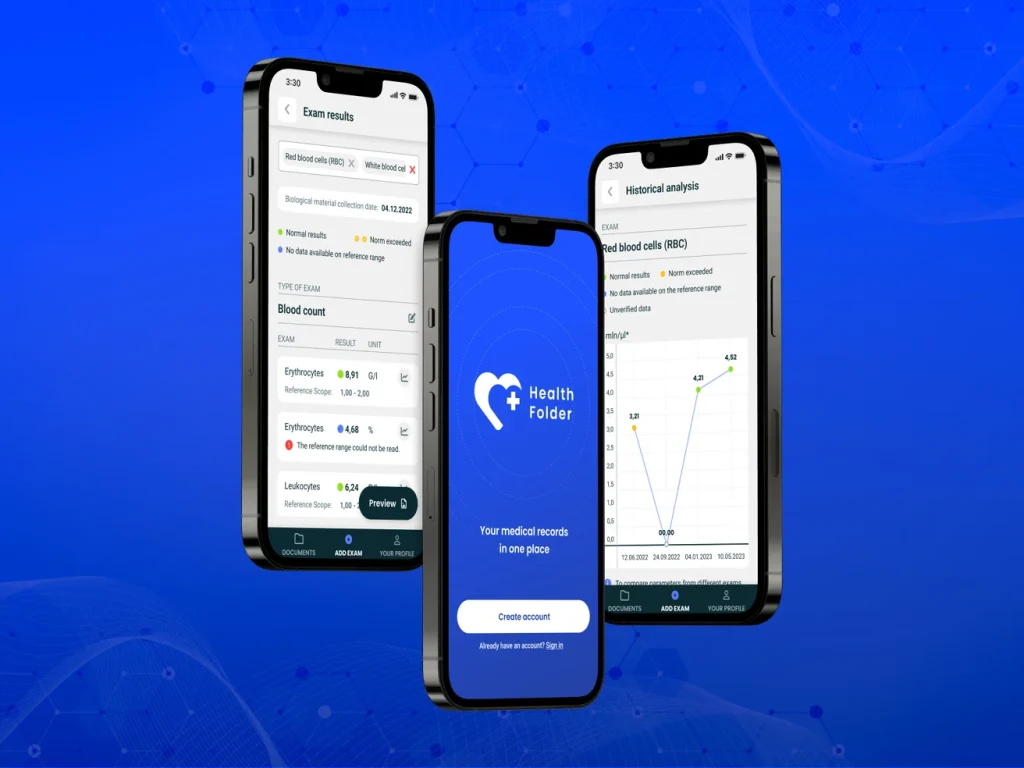
Learn how we built Market Insights AI to deliver fast, accurate market research: competitor analysis, user personas, and market sizes.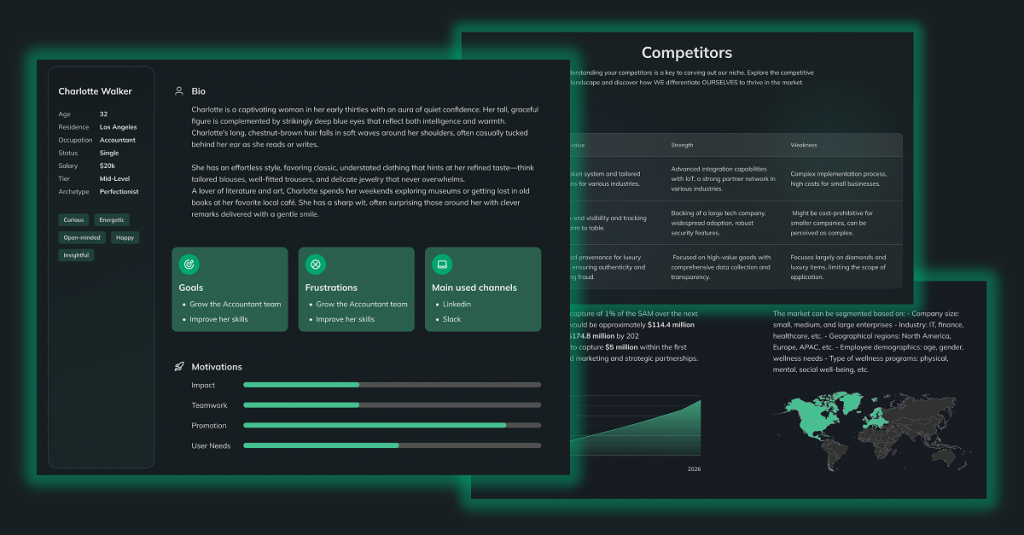
Market Insights AI: Fast and Accurate AI-Powered Market Research
2. AI Agent Development

What It Means
We build AI agents do more than just one task. They automate full workflows, make decisions, and adapt as things change – so your team doesn’t have to babysit the process.
Insurance Claims Example
Suppose you’re an insurance company looking to revolutionize your claims workflow. Pragmatic Coders develops an AI agent that:
The agent receives and analyzes claim photos.
Assesses damage type and severity using image recognition.
Flags potential fraud or anomalies by cross-referencing data.
Generates an adjuster report and recommends actions.
Triggers payouts or follow-ups automatically, without human review.
This agent handles the entire claims process: reading documents, pulling data, routing tasks and updating systems. Neither you nor anyone else needs to step in.
Who Does What?
| Task | Pragmatic Coders | Insurance Company |
|---|---|---|
| Workflow Design | Maps, configures, and builds the agent | Shares process knowledge |
| System Integration | Connects agent to all business platforms | Grants access, reviews output |
| Agent Logic/AI Embed | Builds, tests, tunes automation | Validates actions, requests updates |
| Deployment/Maintenance | Launches, monitors, updates agent | Uses and operates |
❌ How This Differs From…
- Retrofit AI: Instead of “bolting-on” automation to a single function, AI agents own the workflow end-to-end across several systems and tasks.
- Custom Software with Integrated AI: Whereas a greenfield build delivers an entire new platform, here, the focus is on operational AI servants (agents) that operate within or across existing environments.
- No-Code/Low-Code: Platforms like Zapier or Make are great for basic automation. But if you need autonomous workflows that make decisions and adapt on the fly, you’ll need agents.
- Cloud AI Services: API calls handle specific tasks, but the real value comes from how the agent manages the whole workflow – because, unlike API calls, an agent can decide what to do, when, and why.
Fit Analysis
| Aspect | Best For | Not Best For |
|---|---|---|
| Company Size | Mid-to-large enterprises with complex workflow needs | Ultra-lean startups with simple tasks |
| Workflow Complexity | Multi-step, cross-system business processes | Single-task or basic automations |
| Autonomy | Operations where high-value automation is desired | Environments needing heavy human oversight |
| Business Impact | Seeking major efficiency, consistency, and cost improvement | Basic incremental process improvements |
Summary Recommendation
Go for AI agents when you’re ready to move past checklist-style automation and hand off full processes (like onboarding, claims, or approvals) to something smarter. If your needs are simple or just starting out, you’re better off with no-code tools or lighter retrofits.
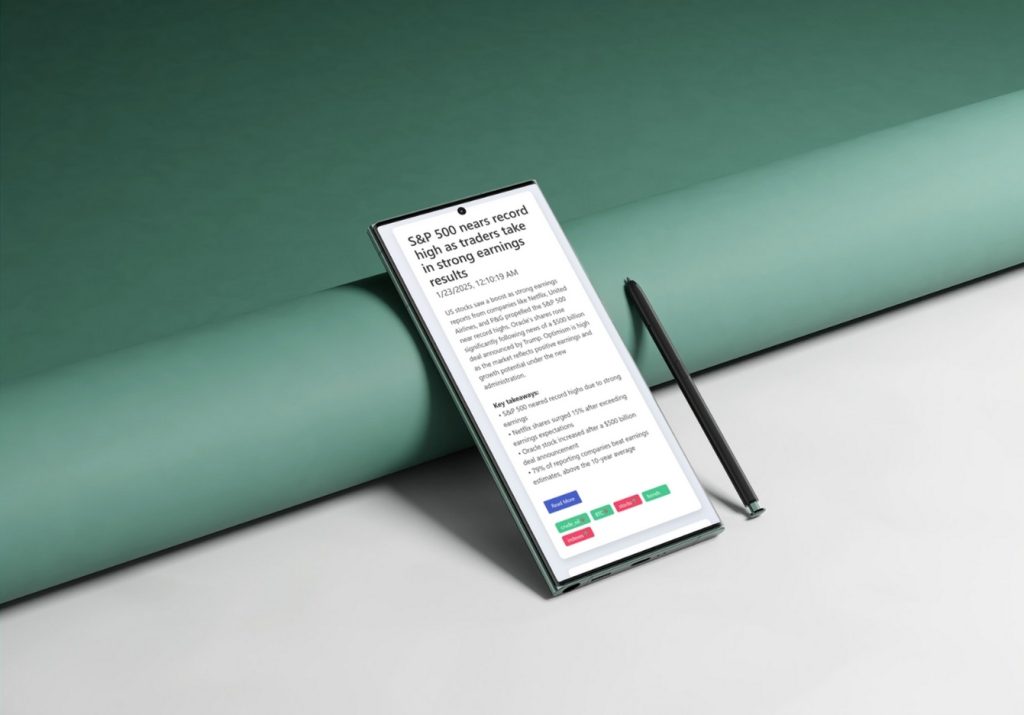
AI Agent Financial Feeds: Real-Time Sentiment Analysis for Financial News
Our AI-driven financial news feeds automatically aggregate, categorize, and summarize headlines, all with real-time sentiment insights.
Learn MoreSales AI is a custom AI workflow that automatically analyzes website contact messages and delivers instant insights on potential leads.Sales AI: The Slack automation that helps us qualify leads


Automate recruitment: How to automate tech hiring with AI
We created an AI-powered workflow to automate tech candidate evaluation. It saves us time and ensures objective & data-driven hiring.
Learn More3. Retrofit Existing Systems
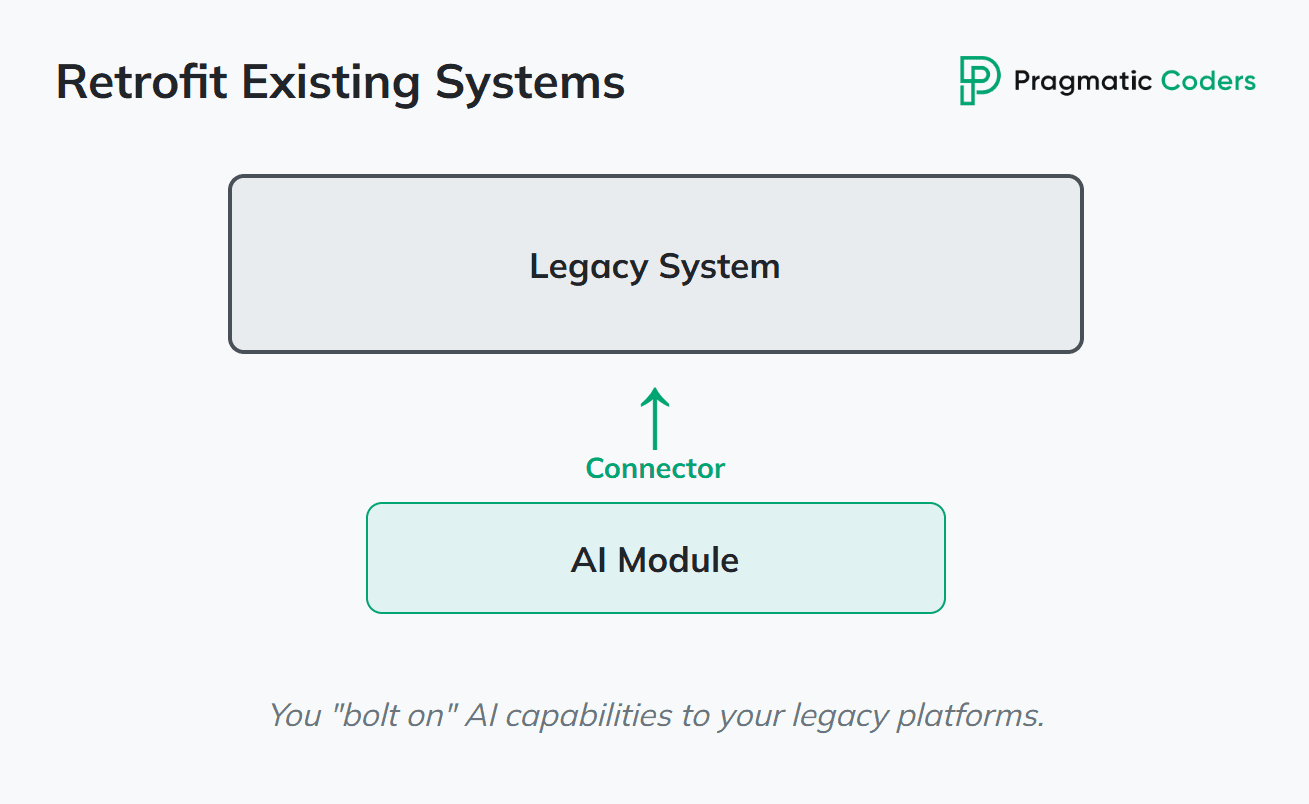
What It Means
Still using older systems? No problem. We layer AI onto your current setup using integrations – so it runs smarter, and there’s no need to break what already works.
Insurance Claims Example
If you run an insurance company with an established claims portal. You want to add AI. Then, for example:
PC adds a damage-detection module to your current claims portal.
Uploaded claim photos are automatically sent to a cloud-based AI (e.g., Azure, Google Vision) via secure APIs.
Results (damage regions, severity estimates) appear within your familiar portal interface.
Your core infrastructure stays intact—just smarter and more efficient.
Who Does What?
| Task | Pragmatic Coders | Insurance Company |
|---|---|---|
| Integration Planning & Mapping | Analyzes your system, designs integration plan | Shares access needs and logic |
| Connector & Middleware Development | Codes integrations and bridges | Validates approach |
| AI API Integration | Wires up external AI to your workflows | Approves flows, reviews results |
| Testing & Deployment | QA, stages, and deploys with minimal downtime | Runs acceptance testing |
| Knowledge Transfer | Documents and trains your IT team | Takes over day-to-day operation |
❌ How This Differs From…
- Partner with AI Specialists: Retrofit is a one-off technical upgrade and handoff; partnership is an ongoing, strategic collaboration
- Custom Greenfield Build: Retrofitting layers AI onto what you have; greenfield builds a system from scratch.
Fit Analysis
| Aspect | Best For | Not Best For |
|---|---|---|
| Company Size | Mid-to-large with legacy platforms | Greenfield startups, micro-firms |
| Integration | Complex, purpose-built connectors | Simple, generic automations |
| Disruption | Quick wins, minimal interruption | Businesses ready to replace everything |
| Ownership | You own and maintain the integration | Require continuous strategic input |
Summary Recommendation
Retrofitting makes sense when your core system still does the job, but you want to make it smarter with AI. You can add features like document processing or photo analysis without breaking what already works.
Need something more future-facing? Go with a full rebuild (option 1) or a strategic AI partner.
4. Cloud AI Services (API-First)
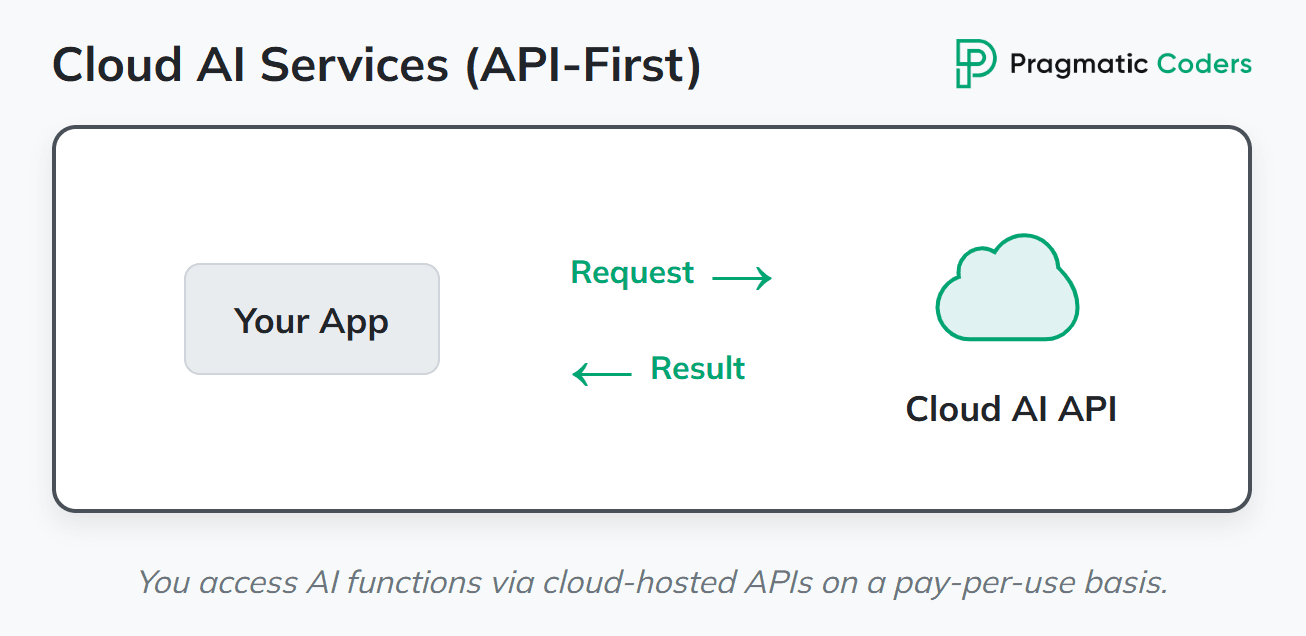
Connect your systems to top cloud AI platforms (e.g., Google Cloud Vision, Azure Computer Vision, OpenAI) via API calls. You pay only for what you use. Pragmatic Coders manages integration, data handling, security, and support. Advanced AI features like image analysis or NLP become instantly available—no infrastructure or model training required.
Insurance Claims Example
Pragmatic Coders links your claims portal to a cloud API (e.g., Google Cloud Vision).
Adjusters upload damage photos; the system sends images to the API.
AI returns results (damage type, severity) directly into your workflow.
PC handles data formatting, error handling, and all behind-the-scenes integration.
❌ How This Differs From…
Retrofit: Retrofitting adds AI to the tools you already use, often by plugging in local scripts or small bits of custom code.
Cloud AI services work differently. They’re built around APIs and connect platforms directly to AI engines like OpenAI or Google’s Gemini.No-Code/Low-Code: No-code works great if you just want to drag, drop, and get things moving. APIs are the way to go if you’ve got devs on hand and want to build something custom.
Custom Software with Integrated AI: You’re improving, not rebuilding; you use proven AI without creating new platforms.
Who Does What?
| Task | Pragmatic Coders | Insurance Company |
|---|---|---|
| API/Service Selection | Finds and recommends best-fit AI APIs | Approves selection |
| Integration & Development | Implements API calls and wiring | Provides feedback |
| Error Handling & Security | Manages validation, compliance, and reliability | Checks compliance needs |
| Testing & Deployment | Handles QA and goes live | User acceptance testing |
| Support | Maintains and updates integration | Requests changes |
Fit Analysis
| Aspect | Best For | Not Best For |
|---|---|---|
| Company Size | Any—startups to enterprises | Strict, on-premises-only setups |
| Skills | Teams with basic dev/IT capacity | No technical resource |
| Scalability | Variable workloads, need instant scale | Ultra-high, on-premise needs |
| Stack | Cloud-first or hybrid environments | Zero cloud permitted |
Summary Recommendation
If you want AI that just works, cloud APIs are a solid bet. They’re fast, stable, and easy to scale. But if you’re working on-prem or don’t have a tech team, go with SaaS or a no-code setup instead.
5. Partner with AI Specialists
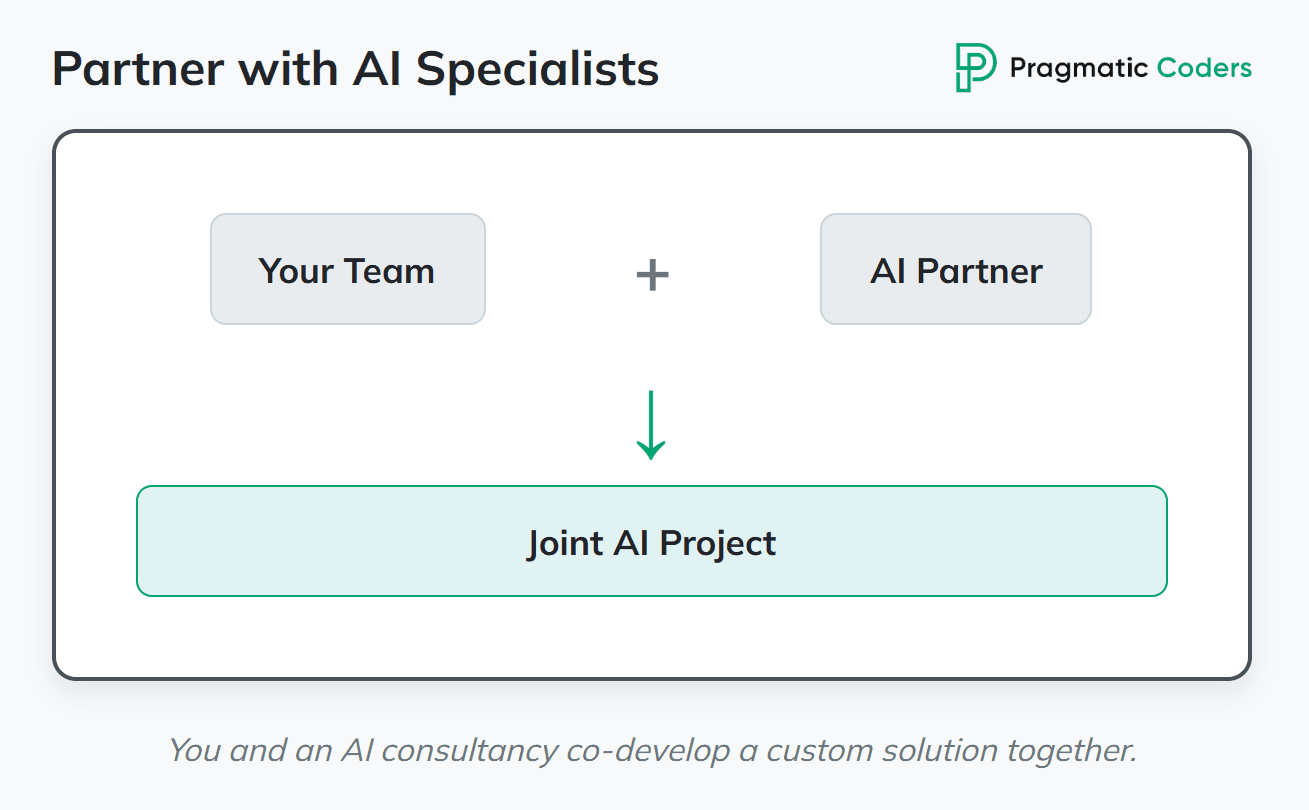
You work with an AI partner who brings the tech skills while you bring the business context. Together, you build something tailored to your needs.
Your Insurance Claims Example
You and Pragmatic Coders co-design a claims automation platform:
Joint workshops to define goals and requirements.
Collaboratively develop advanced modules (e.g., image analysis, fraud detection).
Pragmatic Coders delivers tech; you guide business rules and validation.
Both teams refine, iterate, and expand functionality over time.
❌ How This Differs from Retrofit
Scope: Covers product discovery, strategy, and end-to-end development—not just plugging AI into existing tools.
Ownership: Both sides share long-term governance and improvements; not a one-off handoff.
Engagement: Ongoing workshops and iterations, not just delivery of code.
Who Does What?
| Task | Pragmatic Coders | Insurance Company |
|---|---|---|
| Product Strategy | Leads ideation, AI solutioning | Contributes domain knowledge |
| Solution Design & Coding | Develops, integrates, iterates | Tests, provides feedback |
| Deployment & Scaling | Launches and maintains system | Uses, monitors, requests tweaks |
| Roadmap & Optimization | Suggests improvements, tracks trends | Approves enhancements |
Fit Analysis
| Aspect | Best For | Not Best For |
|---|---|---|
| Company Size | Mid-to-large with budget for collaboration | Very small (cost-prohibitive) |
| Internal Skills | Limited in-house AI/ML expertise | Already have a full AI team |
| Control | Open to shared development and ongoing advice | Want exclusive, in-house ownership |
| Timeline | Prioritize balance of speed and customization | Need ultra-fast, lowest-cost setup |
Summary Recommendation
If you want to stay close to the process and help shape where your AI goes, this is the path for you. It’s great for teams that want to build, learn, and grow alongside a partner. For quicker results or simpler needs, Retrofits or Pre-Built tools might get you there faster.
6. No-Code/Low-Code Platforms

What It Means
Pragmatic Coders uses modern no-code/low-code platforms (e.g., Power Automate, Zapier, Make) to build your automated workflows fast. We assemble and customize the process for you in the platform’s drag-and-drop interface, connect all needed AI services, and ensure everything is secure and integrated. Once delivered, your team can easily tweak or extend the workflow using the same visual tools—without coding or worrying about IT infrastructure.
Insurance Claims Example
PC sets up a claims workflow in Microsoft Power Automate.
Claim photos are routed to an AI service for automatic damage assessment.
The system flags suspicious or complex claims for adjuster review.
Your team can later adjust rules (e.g., add new AI steps, reroute claims), by simply editing the visual flow—no programming needed.
Who Does What?
| Task | Pragmatic Coders | Insurance Company Team |
|---|---|---|
| Platform Selection | Picks and provisions the best-fit no-code tool | — |
| Workflow Setup | Builds and customizes entire claims workflow | Reviews, requests tweaks |
| Glue Code (if needed) | Writes brief scripts for special integrations | — |
| Security & Compliance Config | Sets up roles, logging, error handling | — |
| System Integration | Connects with your existing apps and data | Shares access details |
| Training & Handover | Teaches your team to adjust the workflow | Learns how to make daily changes |
| Ongoing Support (optional) | Advises, helps with upgrades | Makes edits to workflow as business evolves |
Clarification
Your team doesn’t have to build anything from scratch. We set up the full workflow for you right in the platform. After that, they can tweak it on their own using the visual tools.
❌ How This Differs From…
Retrofit: No codebase changes; automation happens in the platform’s visual editor, not by changing your main app.
Custom Development: No traditional coding, servers, or proprietary builds.
Cloud API Integration: Here, the focus is visual editing accessible to business users, not developer-led code.
Fit Analysis
| Aspect | Best For | Not Best For |
|---|---|---|
| Company Size | SMBs, large orgs supporting “citizen developers” | High-precision, custom solutions |
| Speed | Rapid prototyping and deployment | High-volume, mission-critical systems |
| Skills | Teams with little IT capacity | Complex, multi-system automations |
| Complexity | Repetitive tasks, simple workflows | Heavy regulation, multi-step processes |
Summary
Go with this option if you want your team to run and improve the workflow without needing developers. We build the first version, then hand it over so your team can adjust it as needed using simple tools.
If the process is too complex, sensitive, or deeply tied to your systems, a retrofit or custom solution will be a better fit.
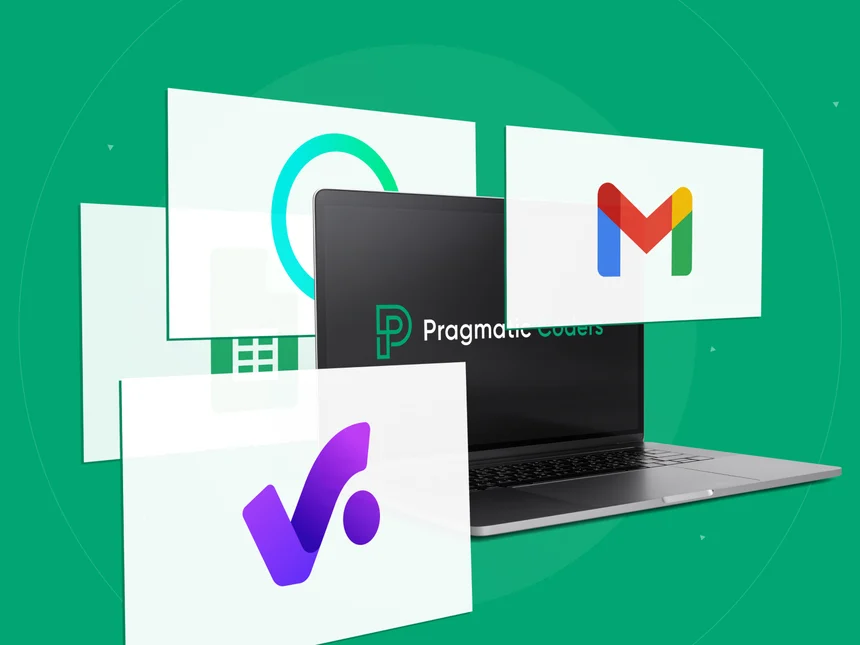
Saving 2 hours daily: efficient AI & low-code accounting automation
We’ve helped our finance specialist get rid of daunting bookkeeping tasks and save her up to 2 hours every day with AI & low-code.
Learn More7. Hybrid Approaches
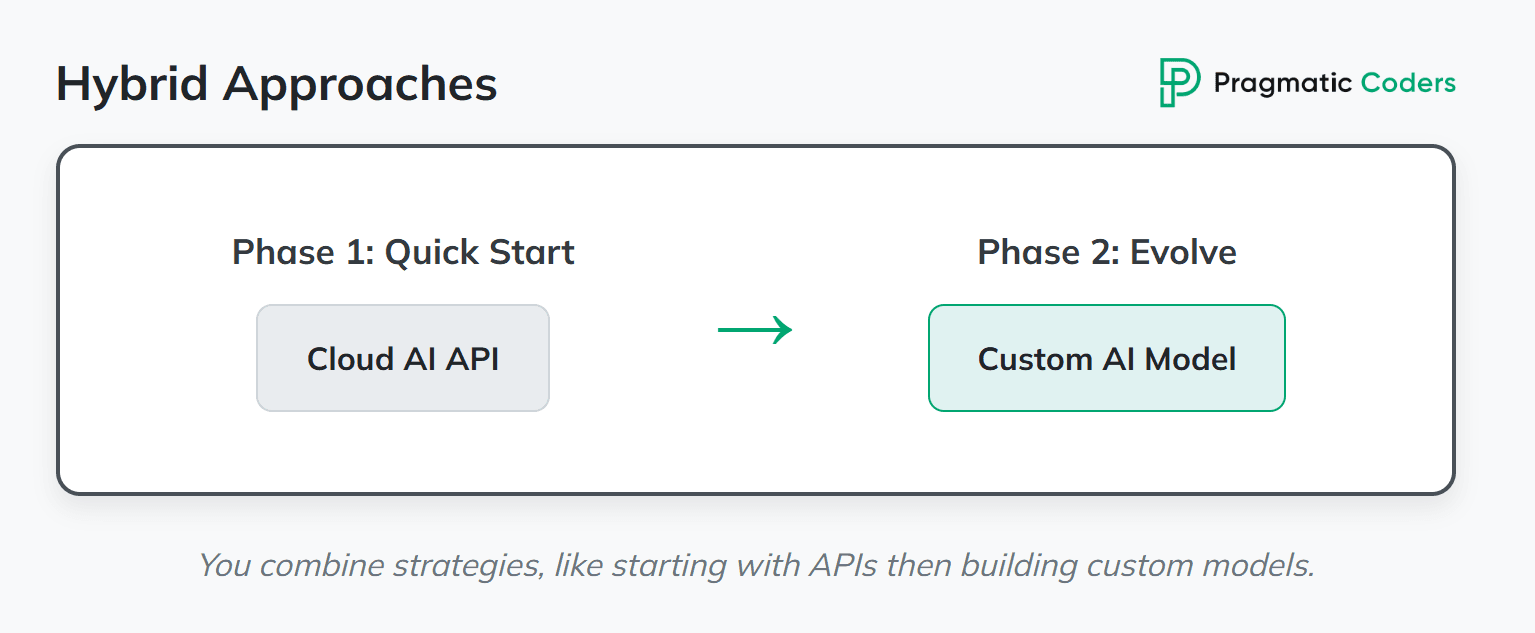
What It Means
You don’t need to bet the farm on a single, massive AI project. We believe in a more pragmatic approach: start small, get results fast, and then scale up. We’ll often kick things off with proven cloud APIs to deliver value almost immediately. As your confidence and business needs grow, we can strategically build out more advanced, custom AI models. It’s a smarter path that makes sure your AI capabilities grow right alongside your business.
Insurance Claims Example
Pragmatic Coders begins by integrating Azure Vision API for rapid, low-risk damage assessment in your claims workflow.
As your team gains experience and wants deeper automations or better accuracy for unique claim scenarios, Pragmatic Coders develops proprietary models (e.g., for rare vehicle damage) and expands automation using AI agents.
Your business benefits from rapid deployment at first, but gains increasingly advanced, tailored capabilities over time—all without locking into a single, static solution.
Who Does What?
| Task | Pragmatic Coders | Insurance Company |
|---|---|---|
| Initial Integration | Builds and launches quick-win cloud AI features | Uses system, gives feedback |
| Roadmap & Strategy Planning | Proposes phased evolution, recommends priorities | Approves direction, budgets |
| Custom Model/Agent Dev | Develops advanced features as needed | Defines new needs, tests |
| Scaling & Optimization | Orchestrates integration as complexity increases | Monitors performance |
| Ongoing Support | Maintains, expands, and updates solution | Partners on strategic goals |
❌ How This Differs
Versus Retrofit: Retrofit is a one-time add-on; Hybrid is incremental, continually adapting and layering new value as the business matures.
Versus Custom Software: Hybrid lets you start lean and scale complexity, while greenfield custom builds start with everything designed upfront.
Versus No-Code/Low-Code: Hybrid can start simple (potentially with no-code), but evolves into custom and automated solutions.
Versus Agent/Cloud-Only: Combines entry-level AI with deep, tailored automations, never locking you into one mode.
Fit Analysis
| Aspect | Best For | Not Best For |
|---|---|---|
| Company Size | Any—scales with startup or enterprise | One-off, single-use-case projects |
| Evolution | Businesses wanting phased, low-risk adoption | Companies needing one, static product |
| Budget Flexibility | Mix of operational and capital funding | Fixed, upfront-only investments |
| Strategy | Firms seeking adaptability and future growth | Needing a monolithic, instant overhaul |
Summary
This strategy is perfect for companies that want to make smart, incremental bets on AI instead of one giant one. It’s for leaders who want to see an impact this quarter, not just two years from now.
But it’s not for everyone. If you need a fixed, one-off solution or you’re looking to tear everything down and rebuild it all at once, a hybrid plan won’t be the right fit.
8. Pre-Built AI Solutions
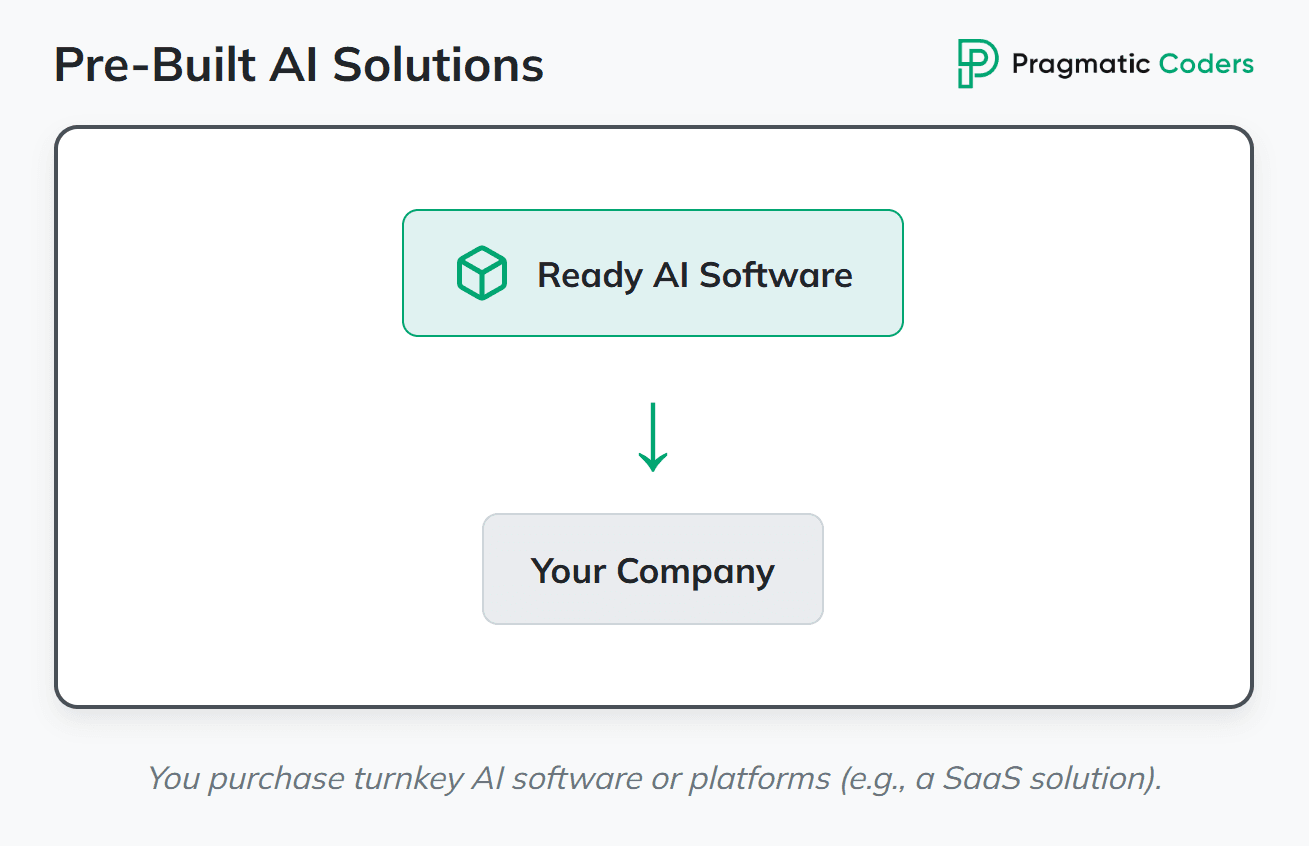
What It Means
This approach is about integrating a proven, off-the-shelf AI tool into your business, rather than starting a custom build from scratch. We handle the entire implementation. We vet the vendors, configure the software to fit your workflow, and manage the technical integration with your existing systems. We also train your team to make sure they can use the new tool confidently.
Insurance Claims Example
Pragmatic Coders helps you evaluate and select a SaaS (for example, Tractable) for automated claims analysis.
You upload claim photos to the vendor’s online dashboard and receive instant, AI-generated damage reports.
PC connects the outputs to your current processes and makes sure staff are onboarded and trained.
Who Does What
| Task | Pragmatic Coders | Insurance Company |
|---|---|---|
| Vendor Selection | Researches and recommends best-fit SaaS | Reviews, approves choice |
| Configuration | Installs and configures the tool | Provides process details |
| Workflow Integration | Sets up data flow and hand-offs | Tests and validates implementation |
| Training | Teaches your team to use the product | Learns via hands-on sessions |
| Support (optional) | Offers troubleshooting and vendor liaison | Uses, requests help as needed |
❌ How This Differs
Versus Custom Build: No bespoke features; you use the tool as designed.
Versus Retrofit: No coding or middleware; just connecting an existing product.
Versus No-Code/Low-Code: No visual building; everything is ready-made.
Versus Cloud API: Uses a SaaS dashboard/interface, not your own app’s code.
Fit Analysis
| Aspect | Best For | Not Best For |
|---|---|---|
| Company Size | Small to mid-sized organizations | Large enterprises needing deep customization |
| Deployment Speed | Rapid, plug-and-play solutions | Unique, complex internal workflows |
| Budget | Limited budgets for custom development | Strategic AI differentiation initiatives |
| Customization | Standard features suffice | Proprietary models or data requirements |
Summary
Pick Pre-Built AI Solutions when speed, simplicity, and minimal IT effort are top priorities, and standard SaaS features are “good enough.” The trade-off, naturally, is control. If you need to customize a system down to the last detail, build in very specific business logic, or own the intellectual property, this isn’t the right path. For that, you’d be looking at a custom build instead.
9. White-Label Custom AI Products
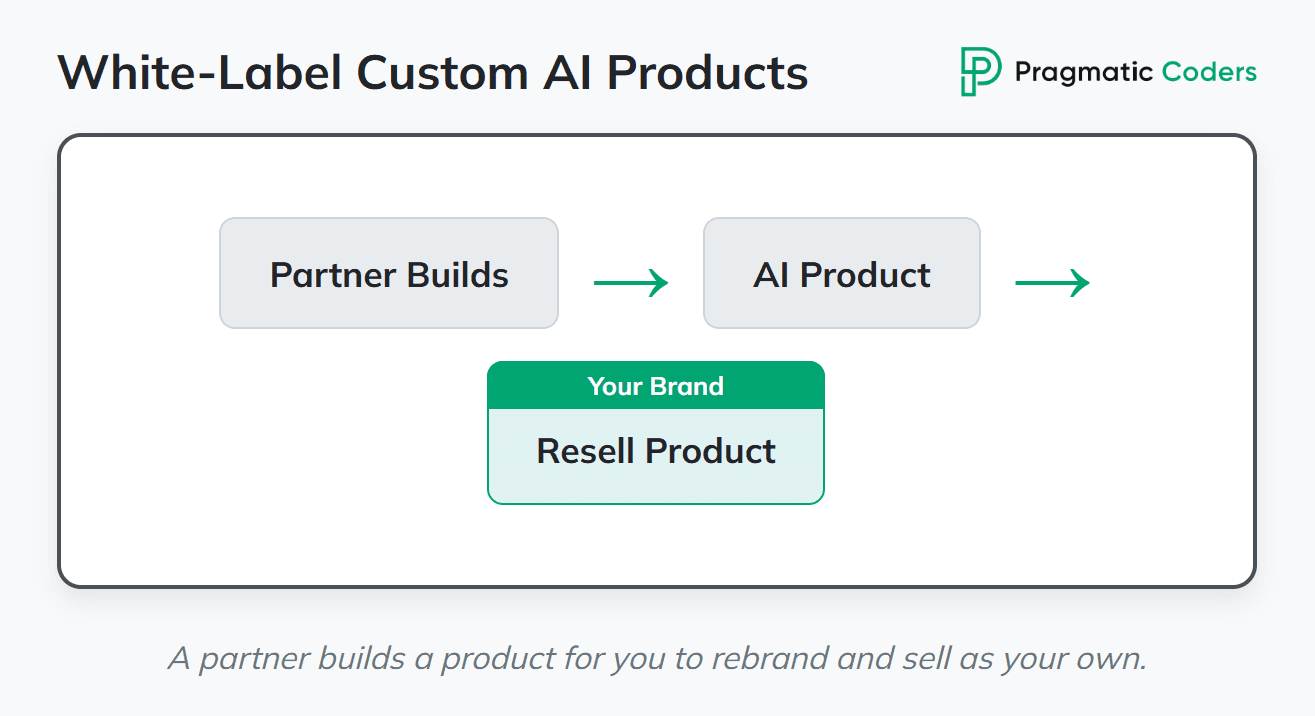
What It Means
This is for companies that want to launch their own AI product, without building an in-house AI team from scratch.
Think of us as your silent product partner. We work with you to design and build a completely custom AI application. Once it’s ready, we package it so you can sell it directly to your customers under your own brand.
Insurance Claims Example
Pragmatic Coders creates an automated damage-assessment tool, branded with your logo and business identity.
You offer this product (e.g., to smaller insurance brokers or industry partners) as your own, providing instant value-add without investing in full in-house development.
PC maintains and updates the core AI technology in the background, handling the technical complexity and ensuring regulatory compliance.
Who Does What
| Task | Pragmatic Coders | Insurance Company |
|---|---|---|
| Product Engineering | Designs, develops, and documents the AI tool | Reviews features, requests branding/customization |
| Branding & Packaging | Applies your brand, prepares go-to-market materials | Approves branding, launches product |
| Maintenance & Support | Updates, improves, and ensures compliance | Markets and supports clients, sells licenses |
| Licensing | Provides legal structure for white-label use | Manages reselling and client relationships |
❌ How This Differs
Versus Pre-Built AI Solutions: Here, the software is created specifically for you (with your branding and business rules), not just configured for your workflow.
Versus Custom AI Build: White-label products prioritize speed to market and resale opportunities; IP and core technology remain with Pragmatic Coders.
Versus Retrofit/Agent/Hybrid: The focus is on enabling client resale and expansion—not just internal process automation.
Fit Analysis
| Aspect | Best For | Not Best For |
|---|---|---|
| Company Size | SMBs, agencies, service providers | Large tech companies seeking total IP control |
| Business Model | Want to resell branded AI for rapid expansion | Organizations focused on unique, proprietary in-house tech |
| Speed to Market | Need ready-to-sell AI quickly | Building unique IP is the main objective |
| Resources | Have limited R&D/dev capacity | Prefer in-house innovation and long build cycles |
Summary
A white-label product is fundamentally a strategic shortcut. It’s the right call when your main goal is getting a new, branded AI product to your customers—fast—without the massive undertaking of building it all yourself.
Yet, if your business strategy revolves around owning the intellectual property, driving all innovation internally, or creating something a competitor can’t easily replicate, then a true custom build is the better way to go.
10. Build from Scratch (Ground-Up AI Development)
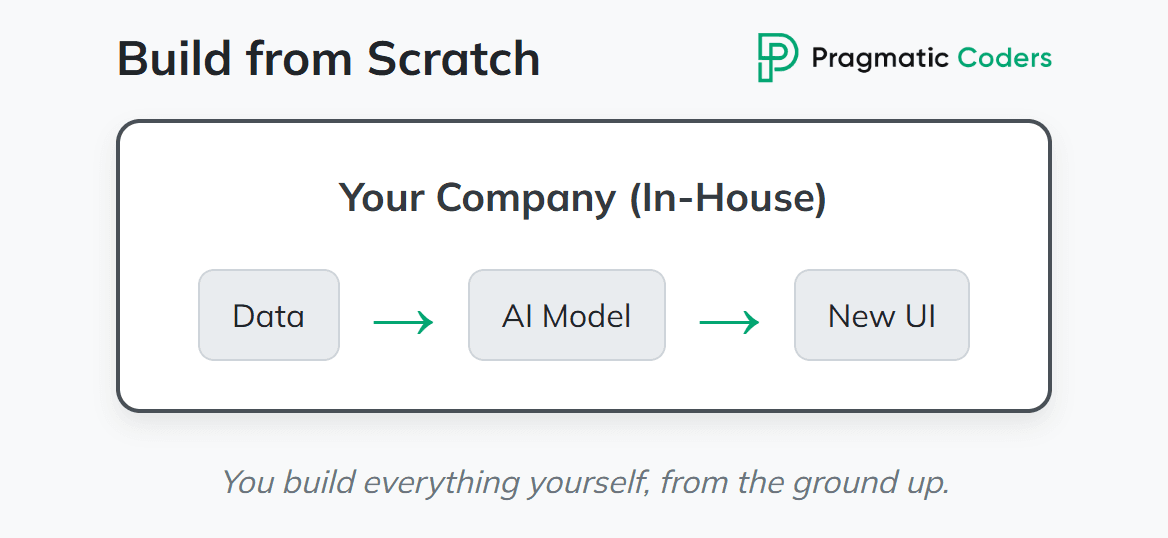
What It Means
Building from scratch means your team develops every component of the AI solution, without relying on third-party services. This covers the entire lifecycle, from data collection and model training to building the final user experience.
The main benefit is having complete control and ownership. You can customize every detail and you retain all the intellectual property. In return, this path requires the largest investment in terms of time, budget, and deep in-house expertise.
Insurance Claims Example
Suppose you’re an insurance company aiming to own a completely proprietary AI claims platform. Here’s what this would look like:
You assemble a team of AI researchers, data engineers, and software developers.
The team collects and securely stores thousands of historical claim photos.
Data scientists and annotators manually label each photo, categorizing damage types and severity levels.
Machine learning engineers design and train your unique deep-learning models for damage assessment, optimized for your dataset and business KPIs.
Developers build out a custom adjuster dashboard, integrating the trained models for real-time image analysis and recommendations.
Security, compliance, regular testing, and performance monitoring
Continuous improvement comes from ongoing data collection, retraining, and feature expansion
❌ How This Differs
It’s the only option that requires building an LLM from scratch. In the remaining 9, the AI element comes from external provides with their own models (be it Anthropic, Chat GPT, Llama, etc.)
Fit Analysis
| Aspect | Best For | Not Best For |
|---|---|---|
| Company Size | Large enterprises with major R&D budgets | Small to mid-sized organizations |
| Timeline | Long-term, strategic AI initiatives (12+ months) | Situations needing rapid implementation |
| Uniqueness | Highly specialized, proprietary requirements | Standard, common industry needs |
Summary
Choosing to build from scratch is a bet on uniqueness over speed. It’s the right move when your top priority is to own every line of code and create a true competitive moat—and you have the R&D budget to back it up.
For everyone else, when getting to market quickly and efficiently is what matters most, and your budget isn’t HUGE – the more pragmatic options we’ve discussed are the smarter path.
How to Choose?
Ask yourself:
Do you need a quick fix or a fully custom system?
Is AI core to your product, or just a functional addition?
Do you have legacy systems to modernize, or are you building from zero?
Do you want to empower your non-technical teams with simple automation?
Is speed, control, or differentiation most important to your business goals?
Each option comes with unique trade-offs in speed, cost, customization, and ownership.
Ready to Start Your AI Journey?
Some teams want fast results. Others need something they can grow over time. Either way, we help you build AI that fits your business and doesn’t waste your resources.
Let’s clarify your needs, explore your options, and build the right AI for your company.
Get Started with Pragmatic Coders—AI Software Development








